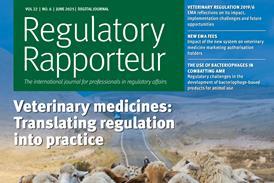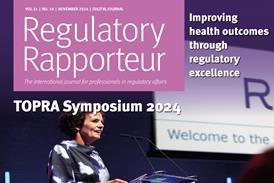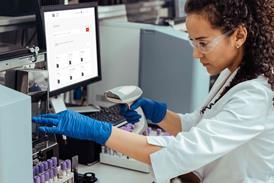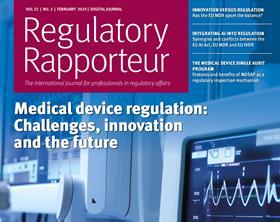
Regulatory Rapporteur
February 2025 | Volume 22 | No. 2
The regulatory environment for medical devices and pharmaceuticals is evolving into a complex and dynamic landscape filled with opportunities.
Frameworks such as the EU Medical Device Regulation (MDR) and the Artificial Intelligence Act (AI Act) are designed to prioritise patient safety and foster trustworthy AI, continuously adapting to support innovation. This landscape calls for ongoing collaboration between regulatory bodies and industry stakeholders, inspiring a balance between safety and creativity. The European Medicines Agency (EMA) and the European Federation of Pharmaceutical Industries and Associations (EFPIA) have launched significant initiatives to enhance patient relevance in evidence generation, emphasising the power of joint efforts and clear regulatory guidance.
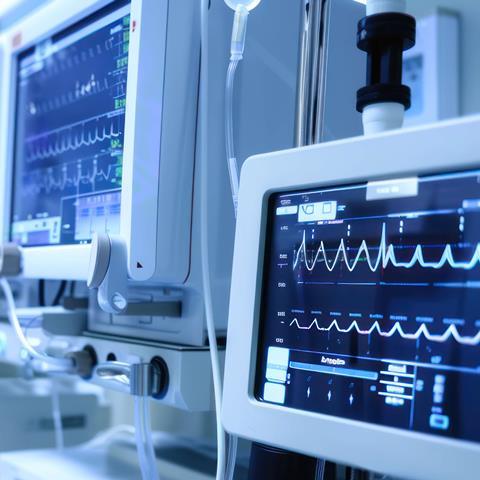
In this issue, we present six insightful articles that explore groundbreaking regulatory developments in medical devices, medicinal products and vaccines.
The introduction of the EU MDR has elevated regulatory standards for medical devices in Europe through stringent classification rules, unique device identification and the European database for medical devices (EUDAMED). While these measures enhance patient safety, they also challenge smaller manufacturers. As Jack Bacon discusses in this first article, striking a balance between regulation and innovation is critical, and this calls for new innovation pathways, increased capacity for notified bodies, and enhanced support for small and medium-sized enterprises. Streamlining this regulation is essential to foster novel technologies and enable the continuous advancement of medical devices.
The EU AI Act adds a transformative layer to the regulatory landscape for medical devices. By mandating specific requirements for AI systems, which emphasise human oversight, technical robustness, safety, privacy and transparency, the Act promotes trustworthy AI while imposing comprehensive compliance requirements. In our second article, Célia Cruz and Angelina Munabi discuss how harmonising these demands with those of the MDR and the In Vitro Diagnostic Regulation (IVDR) is vital for maintaining regulatory consistency and ensuring that AI innovation flourishes.
Programmes like the Medical Device Single Audit Program (MDSAP) strive to simplify regulatory inspections for medical device manufacturers. Our third article, by Mehryar Behizad, illustrates that, by allowing a single audit to fulfil the requirements of multiple regulatory authorities, MDSAP conserves time and resources, paving the way for efficiency. However, a flexible, risk-based approach to nonconformities and global participation is crucial to the programme’s success, driving progress in the industry.
Our fourth article, by Susan Bhatti, Anders Blaedel Lassen, Solange Corriol-Rohou, Marta García, Cathelijne de Gram, Brett Hauber, Nadège Le Roux, Arun Micheelsen and Álmath Spooner, discusses findings from the EFPIA survey on patient experience data in medicines development. A notable theme highlighted is the increasing importance of integrating patient experience data into the regulatory process. The EMA and EFPIA’s work on a Reflection Paper on best practices for patient experience data (PED) showcases a commitment to making evidence generation more patient-centric. Despite internal barriers such as funding challenges and the difficulty in measuring PED’s impact, businesses are eager for explicit guidance on quantifying the return on investment, demonstrating a collective need for a supportive regulatory framework.
Paediatric investigation plans (PIPs) for in utero treatments highlight another strategic area where engagement with regulatory authorities can show commitment and mitigate developmental risks. Our fifth article by Graham Bell shows how ongoing dialogue with regulators is vital to clarify expectations and champion the development of treatments for the foetal population.
In the first part of a two-part series on immunological considerations in the development of novel vaccines, Cecil Nick stresses the significance of understanding both innate and adaptive immune responses to ensure vaccine efficacy and safety. The article highlights the EMA’s guidelines requiring detailed characterisation of immune responses for all vaccine components. By integrating multiple immunological endpoints, such as immune memory and cell-mediated immunity, and exploring novel adjuvants such as toll-like receptor (TLR) molecules, we can predict vaccine effectiveness early in development. This holistic approach meets the diverse needs of global populations and reduces reliance on extensive clinical trials, especially vital for rapid vaccine development during public health emergencies like the COVID-19 pandemic.
We hope you enjoy this issue.
Topics
- EU Artificial Intelligence Act (AIA)
- EU In Vitro Diagnostic Regulation (IVDR)
- EU Medical Device Regulation (MDR)
- European Federation of Pharmaceutical Industries and Associations (EFPIA)
- Immunity
- Innovation
- Medical Device Single Audit Programme (MDSAP)
- Paediatric investigational plans (PIP)
- Patient experience data (PED)
- Regulatory Area
- Vaccine






